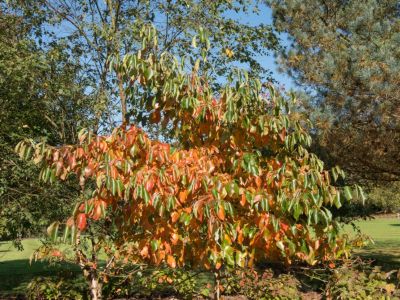Care and Uses for Tupelo Trees
There are many uses for tupelo trees in areas large enough to accommodate their size. They make excellent shade trees and can serve as street trees where overhead wires aren’t a concern. Use them to naturalize low, boggy areas and places with periodic flooding. Tupelo trees are an important food source for wildlife. Many species of birds, including wild turkeys and wood ducks, eat the berries and a few species of mammals, such as raccoons and squirrels, also enjoy the fruit. White-tailed deer browse on the tree’s twigs. Tupelo tree growing conditions include full sun or partial shade and deep, acidic, evenly moist soil. Trees planted in alkaline soil die young. Even though they prefer wet soil, they tolerate brief periods of drought. One thing they won’t tolerate is pollution, whether it is in the soil or the air, so it’s best to keep them out of urban environments.
Types of Tupelo Trees
The white tupelo gum tree (Nyssa ogeche ‘Bartram’) is limited by its environment. It has a native range that centers around Northwest Florida in a low area fed by the Chattahoochee River system. Although it grows in other areas as well, you won’t find another region with the concentration of white tupelos equal to this 100-mile (160 km.) long stretch near the Gulf of Mexico. The area is famous for its high-quality tupelo honey. The most common and familiar tupelo trees are the black gum tupelo trees (Nyssa sylvatica). These trees stand up to 80 feet (24 m.) tall at maturity. They usually have a 1.5-foot to 3-foot (45 cm. to 90 cm.) wide, straight trunk, although you may occasionally see a split trunk. The leaves are shiny and bright green in summer, turning several lovely shades of red, orange, yellow and purple in fall. The tree remains interesting in winter because its regular, horizontal branches give it an attractive profile. The birds that visit the tree to clean up the last of the berries also add winter interest.
